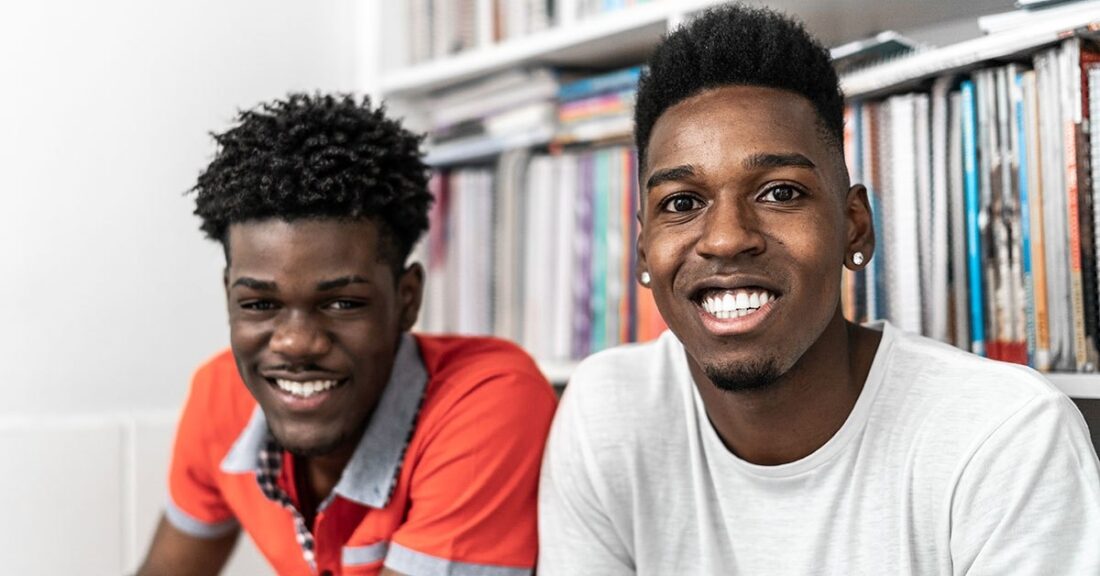Reimagining Juvenile Justice in Ohio

Across Ohio, an approach called Reimagining Juvenile Justice (RJJ) is helping to divert more young people away from juvenile detention and incarceration and into community-based responses. The approach is three pronged. It includes: 1) encouraging listening to and learning from youth who have experience in the justice system; 2) offering them positive opportunities as encouragement when they reach productive milestones; and 3) collaborating across systems more frequently and creatively.
Thanks to RJJ, young people, families, community groups, schools and police are working together in new ways, according to Corey Shrieve, JDAI® coordinator in Ohio’s Department of Youth Services. “The county juvenile justice systems are changing the way they present cases in court,” says Shrieve.
“They are using a positive youth development approach to other reform efforts, including diverting youth away from court when they’re at low risk of committing new offenses, transforming probation and employing strategies to reduce racial and ethnic disparities in youth incarceration.”
The RJJ curriculum development and its training institutes are sponsored by the Annie E. Casey Foundation and delivered by the nonprofit School & Main Institute. Ohio is one of 18 states and more than 35 jurisdictions currently implementing this approach, which has reached more than 900 individuals through a “train-the-trainer” model.
Changing Mindsets About Effective Interventions
School & Main Institute designed the RJJ curriculum with the assistance of experts in the fields of youth work, child welfare and juvenile justice. The training is rooted in adolescent development research, which indicates that young people respond well to a positive environment and supporting, caring adults. The curriculum encourages members of youth-serving agencies — including juvenile justice professionals — to look beyond the risks and challenges and focus instead on a young person’s strengths.
Ohio sent training professionals from eight counties (Ashtabula, Cuyahoga, Delaware, Fairfield Franklin, Lorain, Montgomery and Summit) to national train-the-trainer institutes. These participants — representing the state’s juvenile justice agency and juvenile courts — learned the concepts and instructional approach necessary to deliver RJJ locally.
“A lot of this work involves changing our partners’ philosophical mindset about how kids should be treated,” says Shrieve. “It’s about shifting peoples’ beliefs from punishment and compliance to providing positive incentives that promote the growth of young people. And we can see this change happening in probation and in the courts’ willingness to divert more kids than ever before.”
Progress on Juvenile Justice Reforms in Ohio
A significant accomplishment for RJJ in Ohio is the partnership among the state juvenile justice agency, the Supreme Court of Ohio’s Advisory Committee on Children & Families Subcommittee on Juvenile Justice, the Office of the Ohio Public Defender and locally operated juvenile courts. Together, the partners created and issued a diversion tool kit for juvenile courts, which uses the RJJ curriculum to focus on positive youth development.
The efforts in Ohio have also created cross-sector partnerships in Fairfield County dedicated to addressing truancy, which is a status offense often linked to underlying issues in school or at home. Collaborating with the Family, Adult and Children First Council — a private-public partnership committed to improving child and family well-being in the county — practitioners have established a community-based truancy program that intervenes before the juvenile court becomes involved. In addition, Fairfield County now hosts a roundtable, giving school and court officials a dedicated channel for discussing and addressing truancy.
State funding supports some RJJ implementation efforts. For example, juvenile courts serving four counties in Ohio — Ashtabula, Delaware, Fairfield and Lorain — received two-year grants from the state. The funding supports community collaboratives that address the holistic needs of youth people and their families, help to divert youth from formal system involvement and promote positive opportunities that encourage young people to grow.
Engaging Youth
In the counties implementing RJJ approaches, youth with justice system experience have — along with their families — helped professionals think about their work in a different way. For instance: One young woman recalled having four different counseling appointments with three different counselors each week.
“You could see everybody’s head spin because everybody in that room worked with this kid,” Shrieve recalls. “They were looking at each other like, how did this happen? And it was a great opportunity to ask, what are we doing to realign our practices to better serve kids?”
Youth with justice system experience have also helped underscore the importance of promoting positive behavior, such as offering incentives when young people on probation consistently come home on time. “The incentive doesn’t have to be a thing,” says Shrieve. “It could be an event. Sometimes kids don’t want stuff; they want experiences.”
“Ohio is showing how juvenile justice systems — working with other agency, community and youth partners — can look at young people in a different way, focusing on their assets and strengths, rather than simply attempting to address their perceived deficits,” says David E. Brown, senior associate in the Foundation’s Juvenile Justice Strategy Group.
Next Steps for RJJ
Jurisdictions have until July 22, 2022, to apply for the next RJJ Training-for-Trainers Institute.
The RJJ curriculum modules will also be made available in an e‑learning format this year.
Read Frequently Asked Questions about the 2022 RJJ Training-for-Trainers Institute





